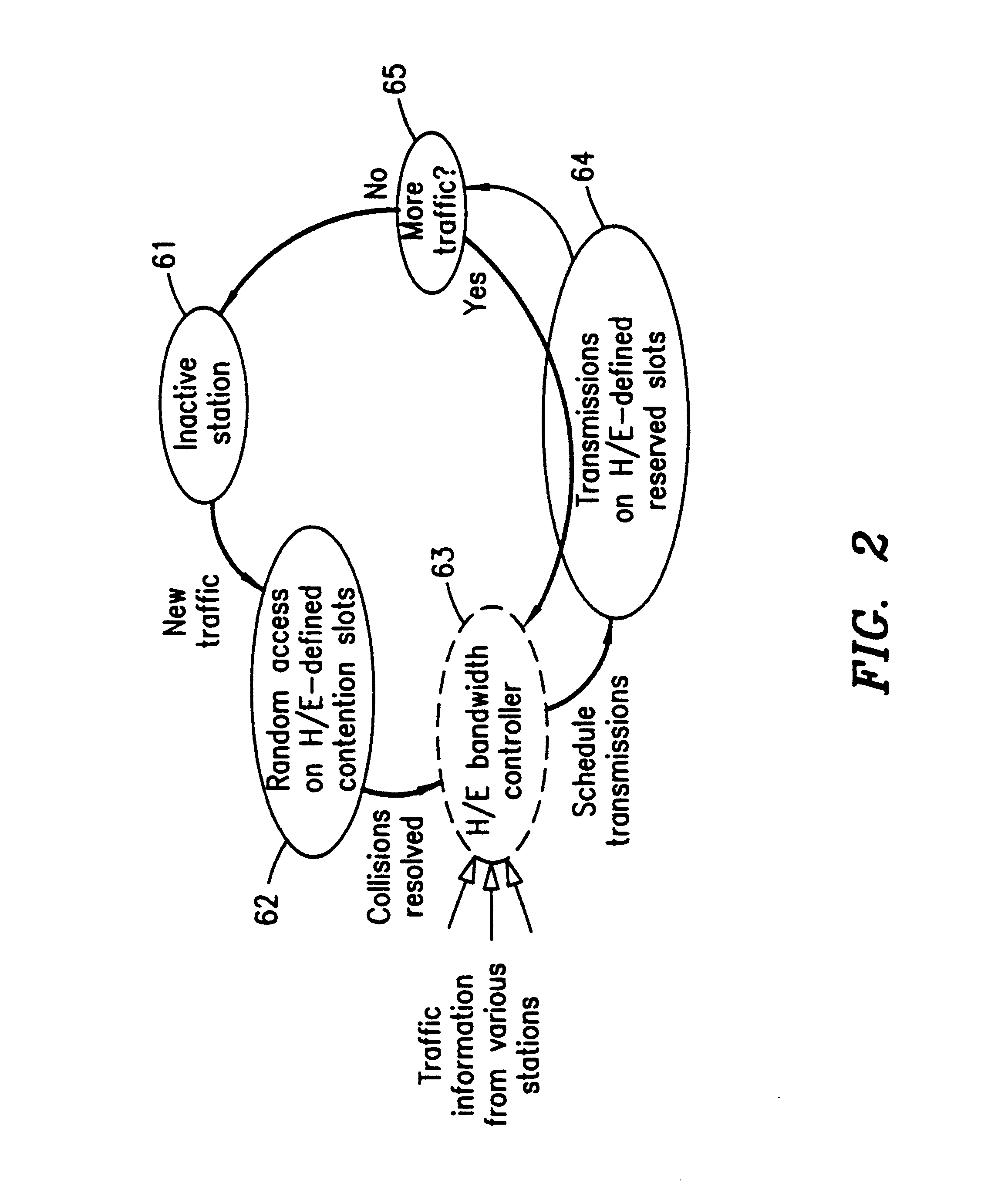Method and apparatus for bit vector array
a bit vector array and array technology, applied in the field of methods and apparatuses for bit vector arrays, can solve the problems of inability to detect collisions, more standard hfc topology, and more difficult to deal with
- Summary
- Abstract
- Description
- Claims
- Application Information
AI Technical Summary
Benefits of technology
Problems solved by technology
Method used
Image
Examples
Embodiment Construction
The IEEE 802.14 working group has been formed with the responsibility of standardizing physical (PHY) layer and medium access control (MAC) layer protocols for HFC networks. The MAC level access protocol (MLAP) is a MAC-level protocol for the HFC environment that has been formally submitted to the IEEE 802.14 working group for consideration. MLAP operates on a full-duplex, multichannel, shared-media network consisting of a variable number of stations or subscribers spread over several kilometers and a single headend controller located several tens of kilometers away from the stations. MLAP is a flexible "asynchronous transfer mode (ATM)-friendly" protocol that supports quality of service (QoS) constraints for various classes of traffic. It allows for contention-based and reservation-based transmissions which are dynamically adjusted to the traffic conditions and has provisions to operate over several modulation techniques. MLAP is supported by a management protocol that provides (am...
PUM
 Login to View More
Login to View More Abstract
Description
Claims
Application Information
 Login to View More
Login to View More - R&D
- Intellectual Property
- Life Sciences
- Materials
- Tech Scout
- Unparalleled Data Quality
- Higher Quality Content
- 60% Fewer Hallucinations
Browse by: Latest US Patents, China's latest patents, Technical Efficacy Thesaurus, Application Domain, Technology Topic, Popular Technical Reports.
© 2025 PatSnap. All rights reserved.Legal|Privacy policy|Modern Slavery Act Transparency Statement|Sitemap|About US| Contact US: help@patsnap.com



